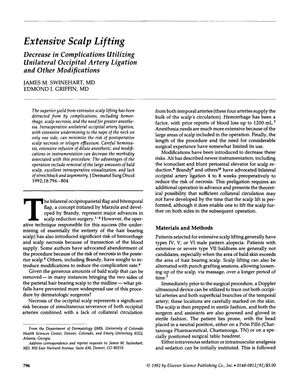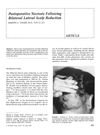Extensive Scalp Lifting: Decrease in Complications Utilizing Unilateral Occipital Artery Ligation and Other Modifications
September 1992
in “
The Journal of Dermatologic Surgery and Oncology
”

TLDR The conclusion is that modifying scalp lifting surgery by cutting one occipital artery and making other changes reduces complications and improves outcomes for patients with severe hair loss.
The document from 1992 describes a surgical technique for extensive scalp lifting, particularly beneficial for patients with type V and VI baldness, which involves removing large portions of bald scalp to reduce hair loss. The authors propose unilateral occipital artery ligation, which involves severing the artery on one side to minimize risks like scalp necrosis and telogen effluvium, and suggest additional modifications such as careful hemostasis, the use of dilute anesthetic, and improved instrumentation to decrease complications. They report no cases of necrosis in over 50 cases using this method. The technique also offers advantages like excellent intraoperative visualization, reduced stretchback, asymmetry, and the potential to eliminate bald areas after multiple operations. The document concludes that these modifications can decrease the risks associated with extensive scalp lifting while enhancing its benefits for patients with extensive hair loss.
